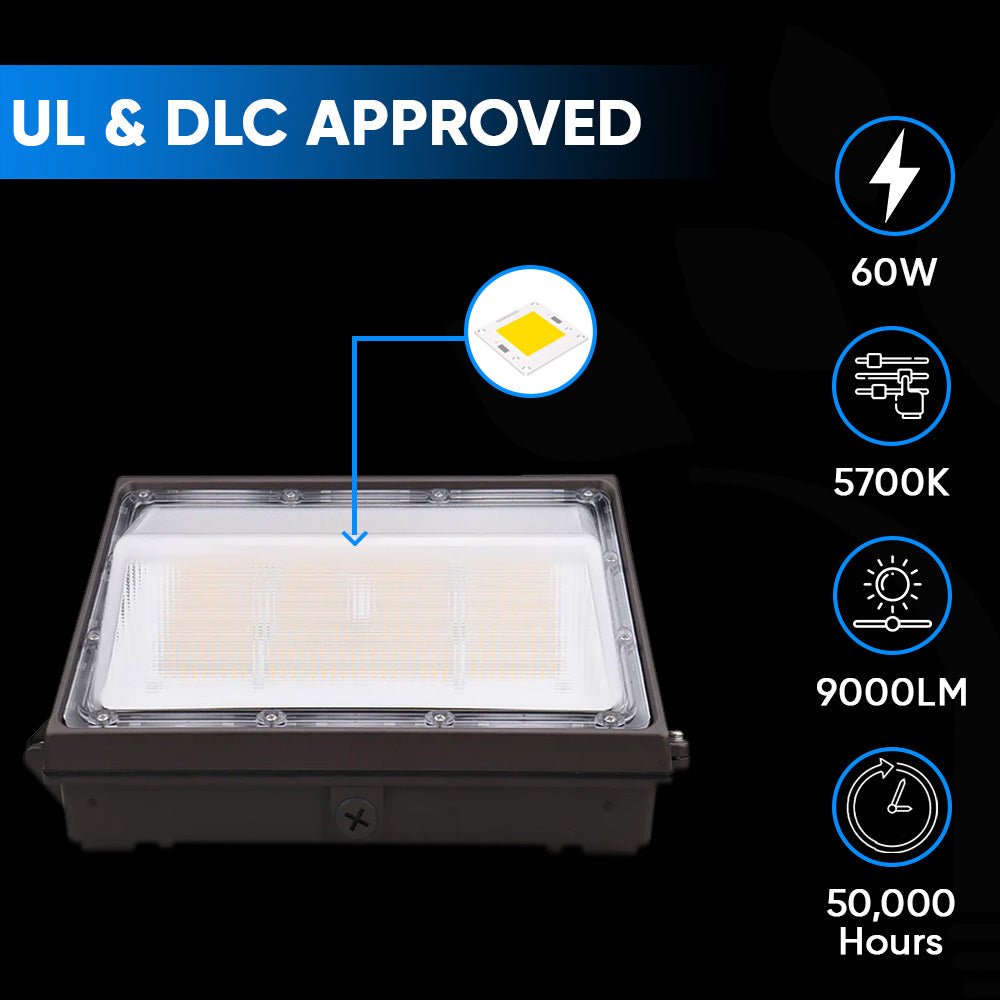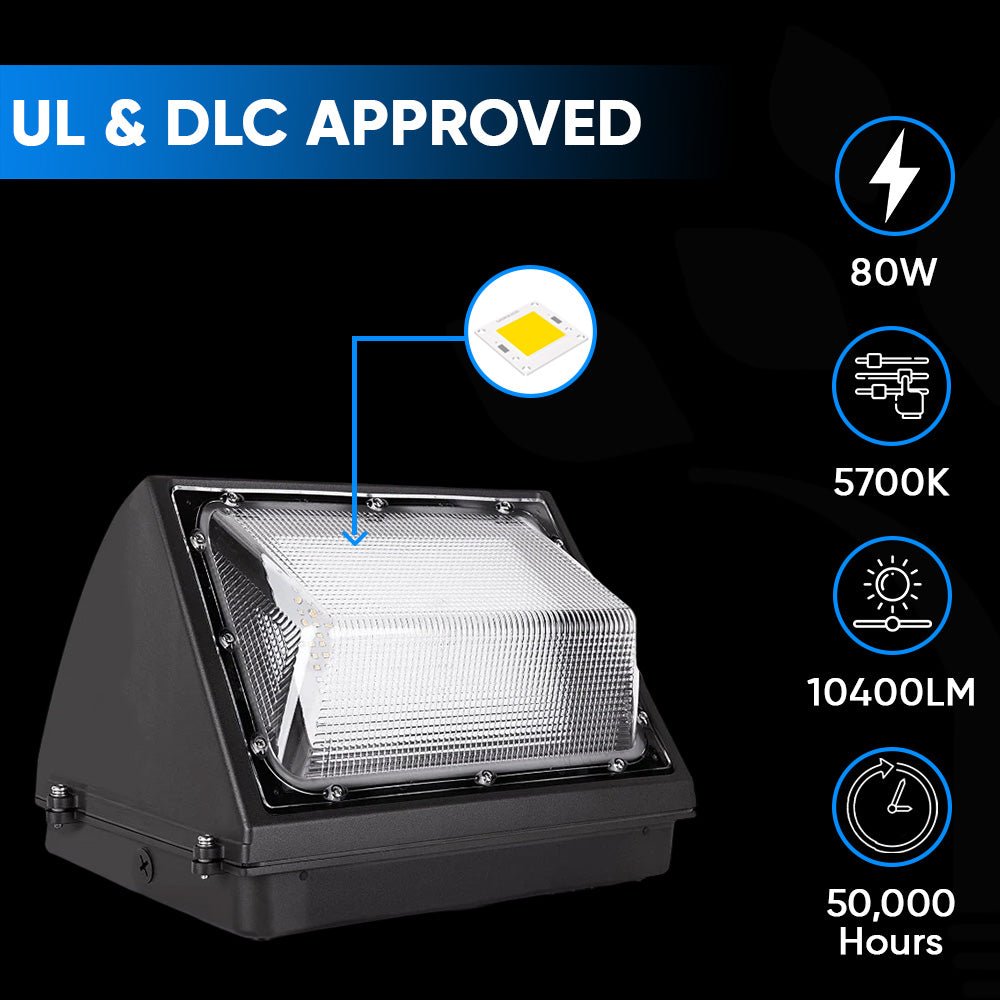LED Wall Pack Lights have, in very little time, become an excellent option for commercial and industrial locations. Their ancestors, including MH, HPS, fluorescent lights, are now considered less ideal because they waste a lot of power. Also, they do not last longer. In this blog, we are going to compare the two kinds of illumination: LED Wall Pack Lights and traditional lighting, and why it would be a great decision for your business or property to make a switch into LED Wall Pack Lights.
What Are LED Wall Pack Lights?
Led wall pack lights are outdoor lights that are usually mounted on the outer walls of buildings, garages, warehouses, and parking lots. Its design is meant for wide-angle, even light distribution, which is ideal for general security, safety, and outdoor lighting. In contrast to conventional outdoor lighting, several advantages of LED Wall Packs set them apart as the better option.
With savings up to 50-70% in energy costs, the American Energy Department estimates that LED lighting saves much compared to other types of lighting. This fact becomes important for systems that run longer hours daily in outdoor lighting.
Longer Lifespan
The other two types are MH and HPS; these traditional lighting sources have a much shorter lifespan than an LED Wall Pack Light. The lifespan of metal halide light is between approximately 10,000 to 20,000 hours and can serve up to 50,000 to 100,000 hours using an LED.
This extended lifespan means fewer replacements, lower maintenance costs, and less downtime for your lighting system. Over time, the savings from having fewer replacements can be substantial, making LED Wall Pack Lights a highly economical choice.
Superior Light Quality
Another important aspect to compare LED wall pack lights with other traditional lighting is the quality of light. LEDs possess a higher CRI, which is the ability of how well the light represents the colors. It generally prides itself of a CRI at 80 and above for LED wall pack lights, offering clearer and more natural-looking light against the yellowish hue often possessed by HPS lights, which usually has a CRI of less than 30.
LED lights are also instant-on as they brighten up immediately upon being switched on. This is in contrast to the conventional lighting usage where metal halide or sodium lights need to be "warmed up" to reach their maximum brightness, which is inconvenient in most settings.
It has a significantly lower heat emission. In the case of metal halide and HPS, there is a lot of heat emission and a lot of such wasted energy; potentially increasing ambient temperatures at any point adjacent to their mounting place. LED Wall Pack Lights do not emit much heat; thus, they are much safer and more efficient.The LEDs release most of the electricity used in lighting as light and waste minimal quantities as heat. It also helps the LED fixtures to further prolong their lifetime as they are not exposed to excessive heat which breaks down other light elements.
Superior Durability and Resistance to Weather Conditions
Such lighting fixtures used outdoors must, therefore, be very robust in withstanding weather elements such as rains, winds, dust, and hot temperatures. The LED Wall Pack lights are generally rated IP65 or more and thus highly dust-proof and water-proof making them suitable for outdoor installations.
Traditional lighting breaks easily and is not much resistant to weather, which makes it have a higher cost of maintaining and replace more.
The LED Wall Pack Lights are designed and tough with impact-resistant housing and components that will finally last even under harsh outdoor settings.
Cost Savings and ROI
Although the initial investment in LED wall pack lights might be more significant than any traditional lighting, their ROI is also very significant. Actually, due to energy efficiency and longer lifespan, businesses and property owners normally get back their investment within 2-3 years because of energy savings and reduced maintenance expenses.
For example, 20 traditional 150W metal halide wall pack lights in a commercial facility can save up to $1,500 per year when the facility switches to 40W LED Wall Pack Lights and saving even more in total maintenance cost over the LEDs' lifetime. Environmental Advantages
Another eco-friendly decision is the switching to LED Wall Pack lights. LEDs do not contain harmful contents like mercury, which is found in fluorescent and metal halide bulbs. Furthermore, the lower energy used by LED lighting will also reduce your carbon footprint in contributing to reduce green house gases globally.
According to the U.S. Environmental Protection Agency, up to 348 terawatt-hours of electricity could be saved throughout the country with the widespread use of LED lighting by 2030-an amount equal to the annual output of 44 large power plants.
Conclusion: Why You Should Switch to LED Wall Pack Lights
LED Wall Pack Lights offer significant advantages over any conventional lighting system. They save energy, last much longer, give excellent quality lighting, are tough, and imply cost-effectiveness. Whatever is the intention to light up a parking, light up the external walls of a building, or light up any outside area, switching to LED Wall Pack Lights would ensure increased safety along with reduced operational costs and a greener environment.
With the advancement of LED technology and rising affordability, now is the perfect time to switch over and enjoy the many advantages that LED Wall Pack Lights offer.
























































































